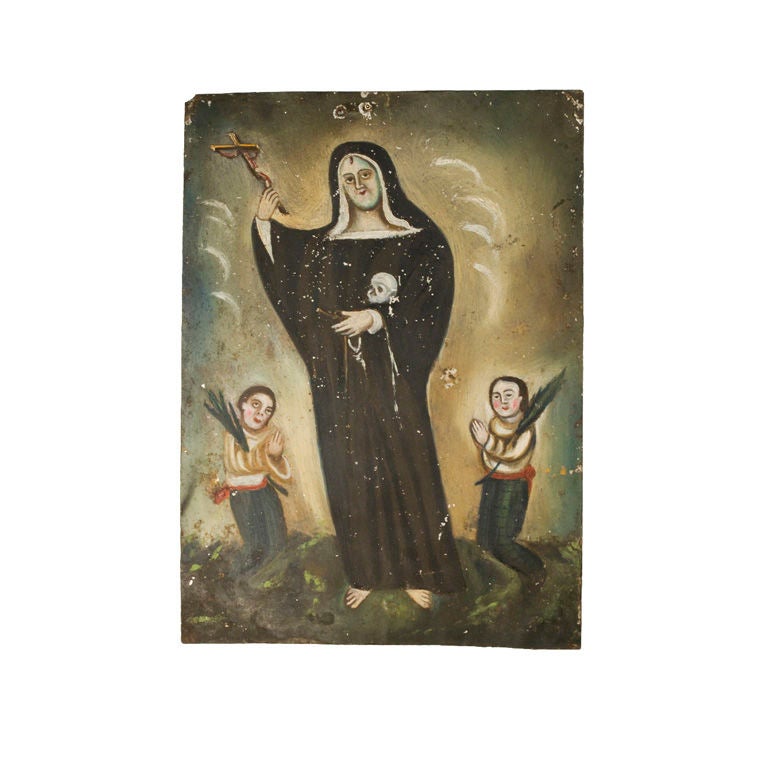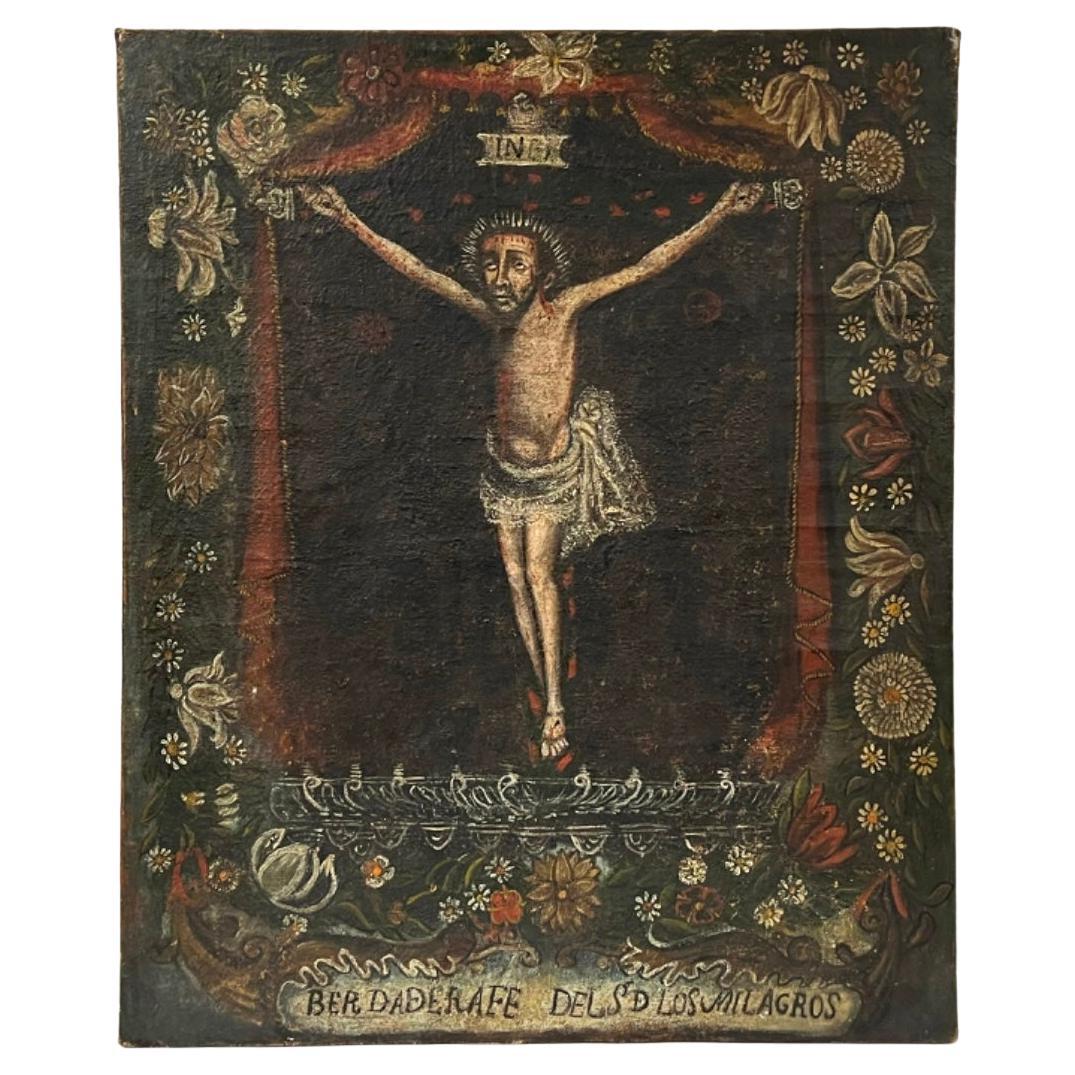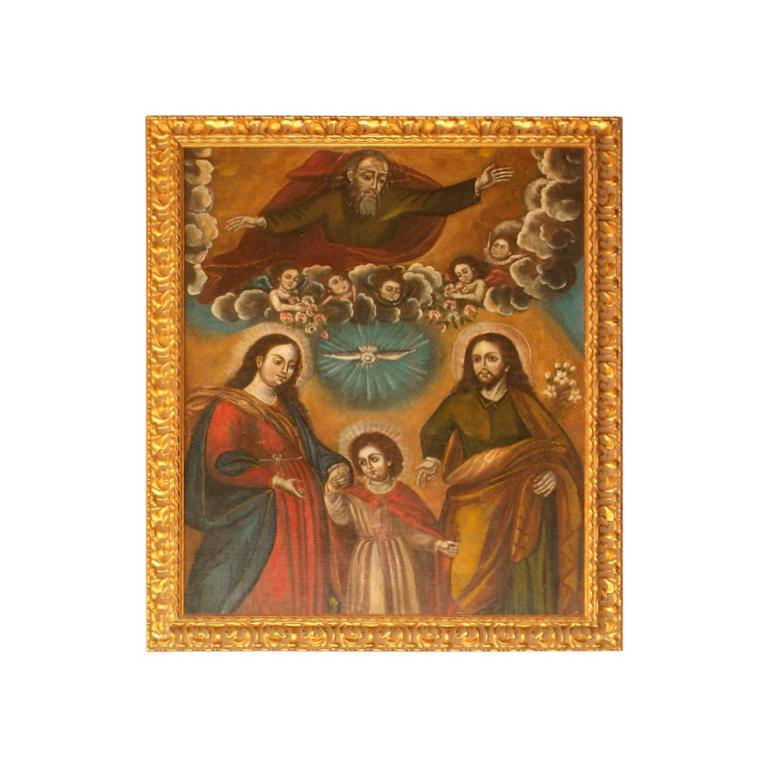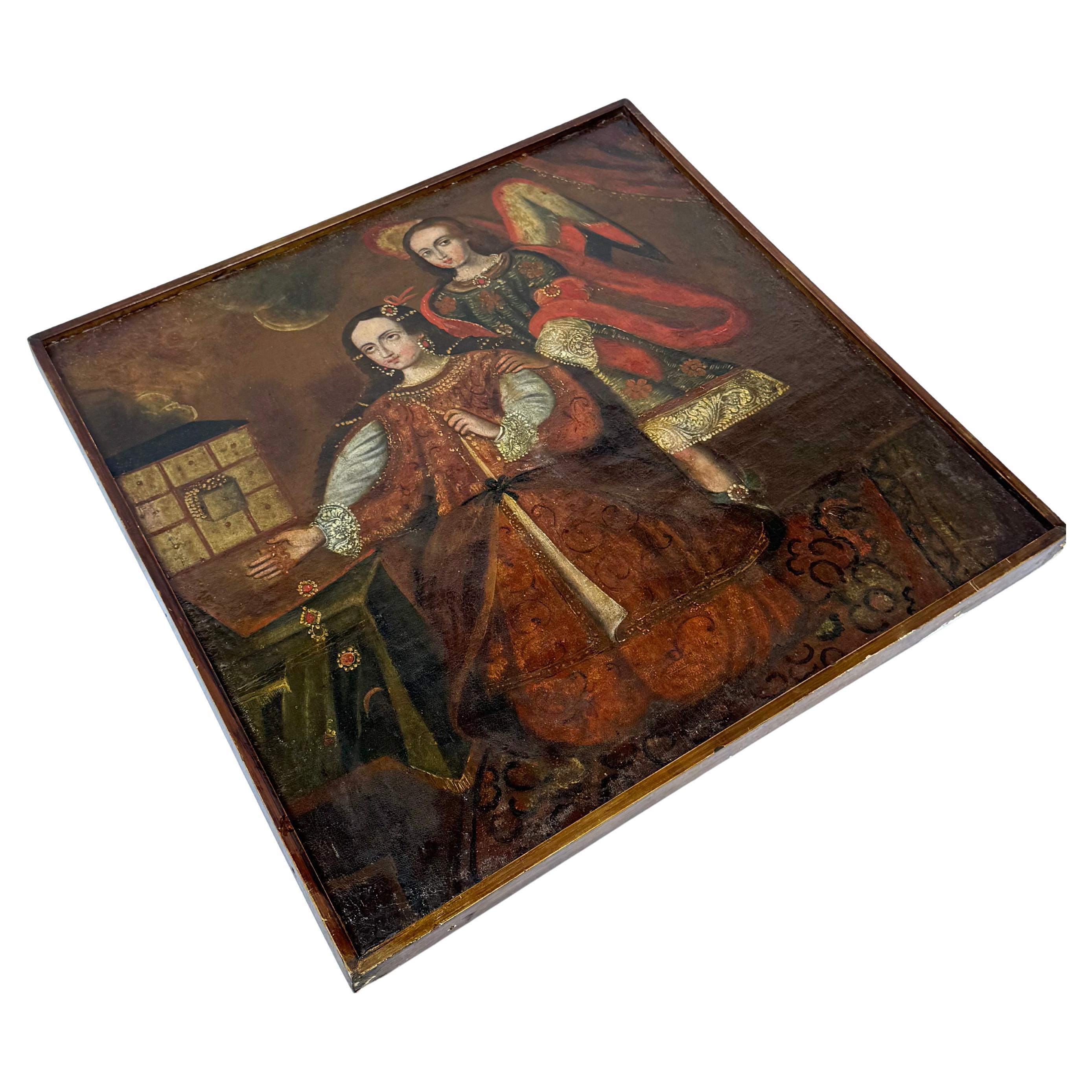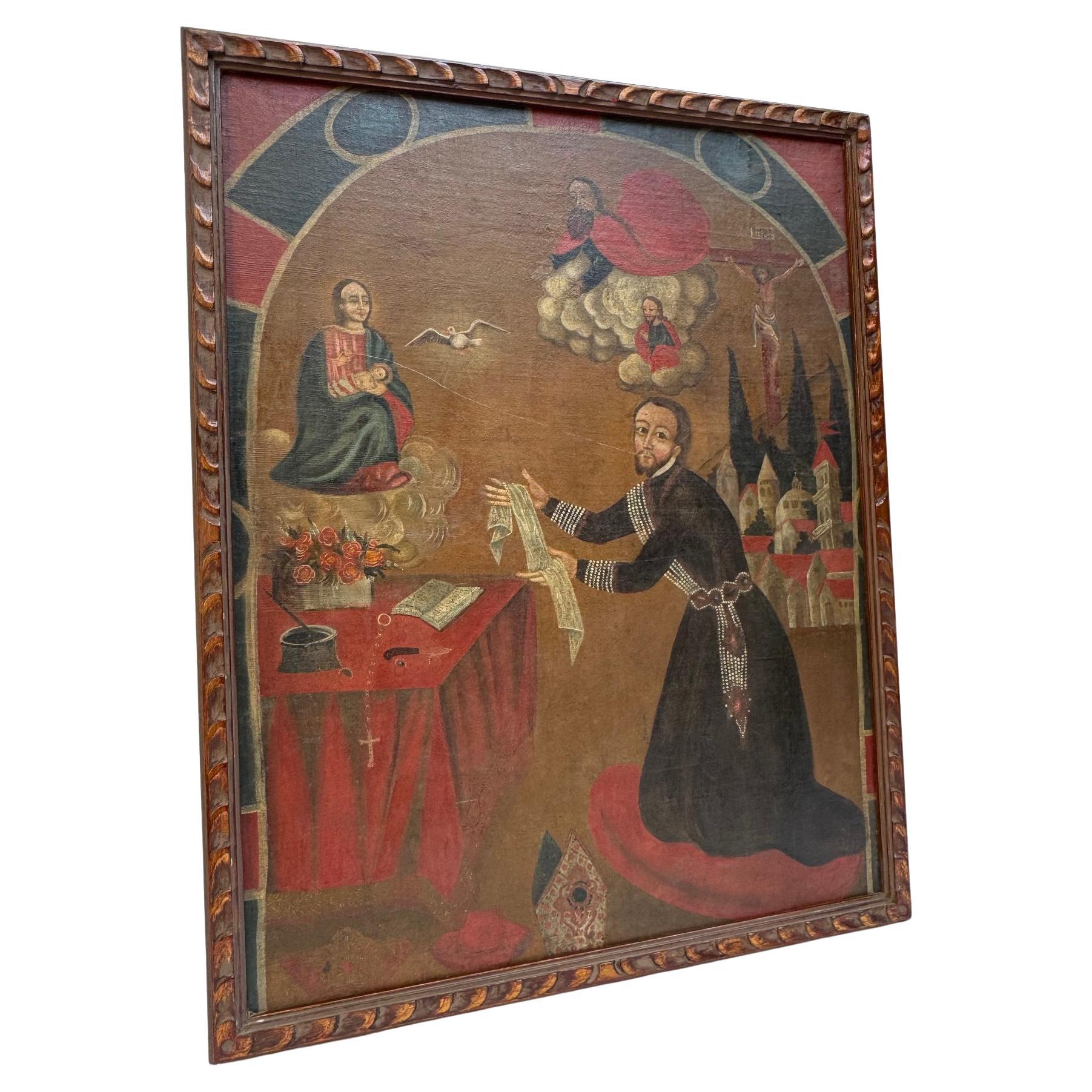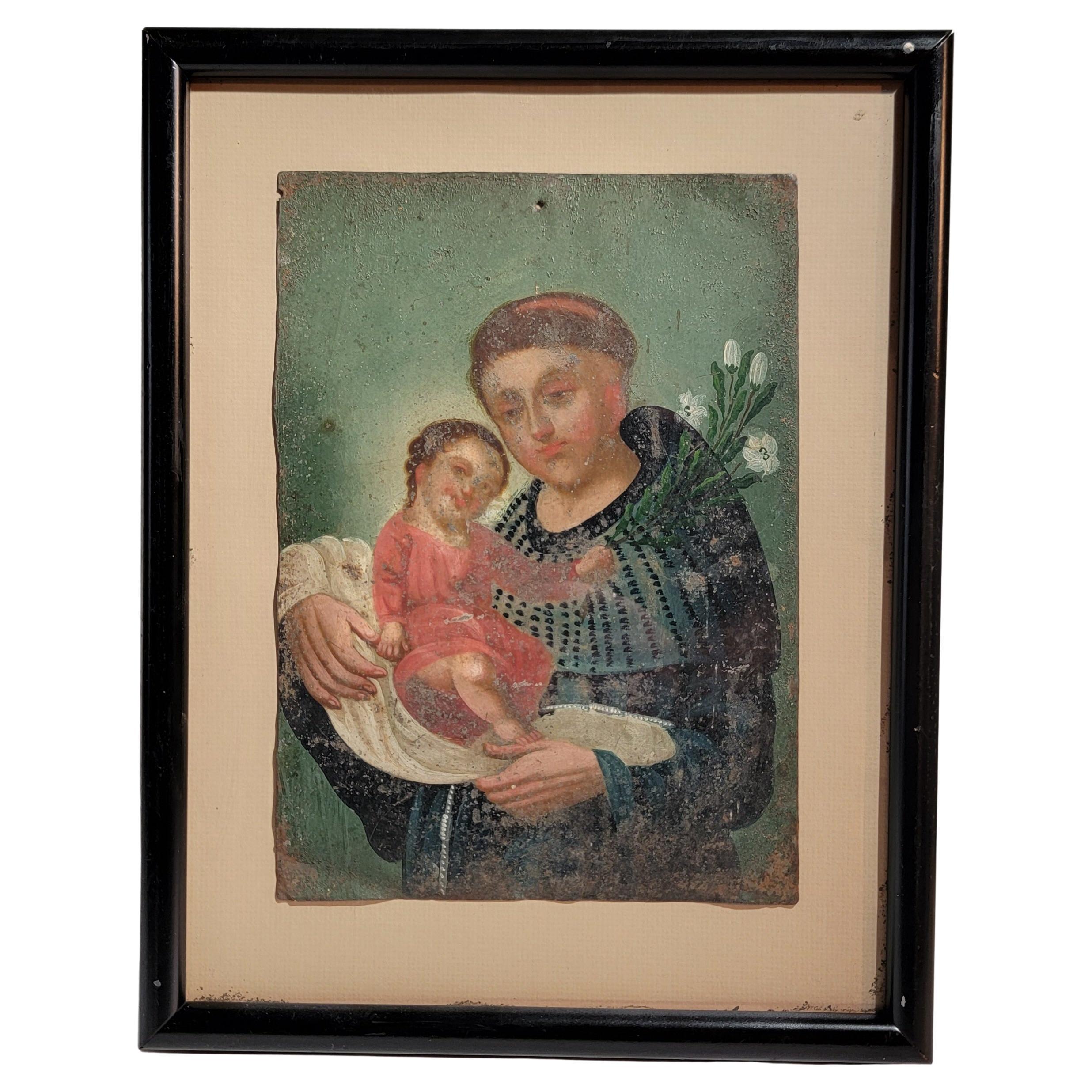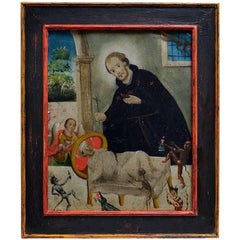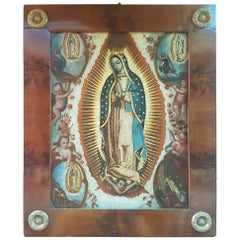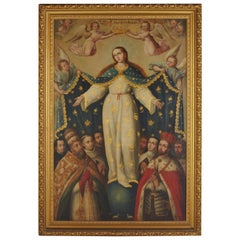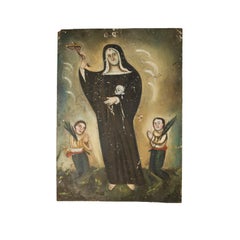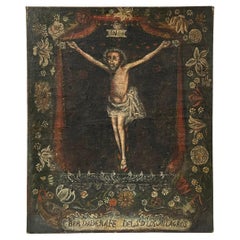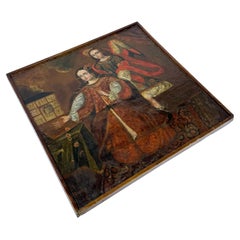Items Similar to St Hedwig
Want more images or videos?
Request additional images or videos from the seller
1 of 2
St Hedwig
$3,000
£2,253.68
€2,598.86
CA$4,162.89
A$4,625.89
CHF 2,424.02
MX$56,728.30
NOK 30,916.91
SEK 29,085.49
DKK 19,396.82
Shipping
Retrieving quote...The 1stDibs Promise:
Authenticity Guarantee,
Money-Back Guarantee,
24-Hour Cancellation
About the Item
This 19th century Mexican oil on tin 'oracion' (prayer) is dedicated to Santa Eduviges. Saint Hedwig is the patroness saint of Bavaria, brides, jealousy and difficult marriages -- known mostly for her generosity, bestowing all that she could give to the sick, the feeble, the impoverished and the imprisoned. In this image she is flanked by two young men, devoting her riches to a group of indigents at the gates of prison. The prayer, written in her honor, was offered by one of her many beneficiaries in commemoration of her good will.
- Dimensions:Height: 14 in (35.56 cm)Width: 10 in (25.4 cm)Depth: 0.1 in (2.54 mm)
- Style:Spanish Colonial (Of the Period)
- Place of Origin:
- Period:
- Date of Manufacture:19th Century
- Condition:Minor losses.
- Seller Location:Mexico, MX
- Reference Number:1stDibs: LU319619190561
About the Seller
No Reviews Yet
Vetted Professional Seller
Every seller passes strict standards for authenticity and reliability
1stDibs seller since 2017
- ShippingRetrieving quote...Shipping from: Mexico, Mexico
- Return Policy
Authenticity Guarantee
In the unlikely event there’s an issue with an item’s authenticity, contact us within 1 year for a full refund. DetailsMoney-Back Guarantee
If your item is not as described, is damaged in transit, or does not arrive, contact us within 7 days for a full refund. Details24-Hour Cancellation
You have a 24-hour grace period in which to reconsider your purchase, with no questions asked.Vetted Professional Sellers
Our world-class sellers must adhere to strict standards for service and quality, maintaining the integrity of our listings.Price-Match Guarantee
If you find that a seller listed the same item for a lower price elsewhere, we’ll match it.Trusted Global Delivery
Our best-in-class carrier network provides specialized shipping options worldwide, including custom delivery.More From This Seller
View AllSan Camilo
Located in Mexico, DF
This 19th century oil on tin folk retablo represents 'San Camilo de Lelis', often referred to as the 'Red Cross Saint' -- a reference to the Red Cross worn on his black habit.
San C...
Category
Antique Early 19th Century North American Spanish Colonial Paintings
Materials
Other
$4,000
"Saint Ferrer", Oil on Tin
Located in Mexico, DF
A 19th century oil on tin folk retablo San Vicente Ferrer, a Dominican Friar who traveled 21 straight years spreading his faith as a missionary. Saint Vince...
Category
Antique Early 19th Century North American Spanish Colonial Paintings
Virgin of Guadalupe, Oil on Copper, 18th Century
Located in Mexico, DF
Virgin of Guadalupe with flowers and appearances of the Virgin to Juan Diego, oil on copper, 18th century. This item does not belong to the mexican...
Category
Antique Early 18th Century North American Spanish Colonial Paintings
Materials
Other
18th Century Painting, Our Lady of the "Goodhelp" with Saints
Located in Mexico, DF
Spanish colonial
Mexican school
18th century
Oil on canvas
Measures: 177 x 11 cms.
Category
Antique Mid-18th Century North American Paintings
Fray Antonio de San Pedro by Manuel de Arellano, XVII Century
By Manuel de Arellano
Located in Mexico, DF
XVII century Mexican Painting by Arellano. "EL BENERABLE SIERVO D DIOS Fray Antonio de S. Pedro de la Sagrada Religion N. S. de la Merced"
Signed: Arellano fecit
Category
Antique 17th Century North American Spanish Colonial Paintings
Materials
Canvas
St John the Baptist
Located in Mexico, DF
Jose de Alcibar, infant Saint John, signed and dated 1802, oil on copper. This item does not belong to the mexican heritage as it has been acquired and...
Category
Antique Early 19th Century North American Spanish Colonial Paintings
$25,000
You May Also Like
Santa Rita Retablo
Located in Santa Monica, CA
This late 19th century Mexican Folk Art devotional painting depicts St. Rita of Casia, the patron saint of lost and improbable causes.
Wishing to join an Augustinian convent ...
Category
Antique 19th Century Mexican Spanish Colonial Religious Items
Materials
Tin
$1,450
18th Century Spanish Colonial Painting
Located in Bradenton, FL
18th Century Spanish Colonial Painting of Christ on the Cross with a floral border. Painting inscribed at bottom BER DADERAFE DELSD LOS MILAGROS(translates to “True Faith of the Lord...
Category
Antique 18th Century Spanish Spanish Colonial Paintings
Materials
Paint
Large 18th century Spanish Colonial Religious Painting
Located in San Francisco, CA
Large oil painting of the holy family on hand woven canvas.
Peruvian or Bolivian.
Acquired from an estate in the San Francisco Bay Area f...
Category
Antique 18th Century Peruvian Spanish Colonial Paintings
Materials
Canvas
$8,400 Sale Price
20% Off
Saint Mary Magdalene - Spanish Colonial - 18th Century
Located in Rio De Janeiro, BR
An exquisite Spanish Colonial oil painting from the 18th century, depicting Saint Mary Magdalene in a richly detailed composition. This piece showcases the characteristic Cuzco Schoo...
Category
Antique Mid-18th Century Bolivian Spanish Colonial Paintings
Materials
Canvas
18th-Century Mexican Spanish Colonial "The Mystical Lactation of Saint Cajetan"
Located in Rio De Janeiro, BR
Rare 18th-Century Mexican Spanish Colonial Oil Painting "The Mystical Lactation of Saint Cajetan"
This remarkable 18th-century Mexican Spanish Colonial oil on canvas presents a rar...
Category
Antique Mid-18th Century Mexican Spanish Colonial Paintings
Materials
Canvas
Spanish hand painted Retablo Art
Located in Los Angeles, CA
A Retablo is a devotional painting, especially a small popular or folk art one using iconography derived from traditional Catholic church art. Depicting a Saint and a child painted o...
Category
Antique Mid-19th Century American Adirondack Paintings
Materials
Tin
$716 Sale Price
20% Off
